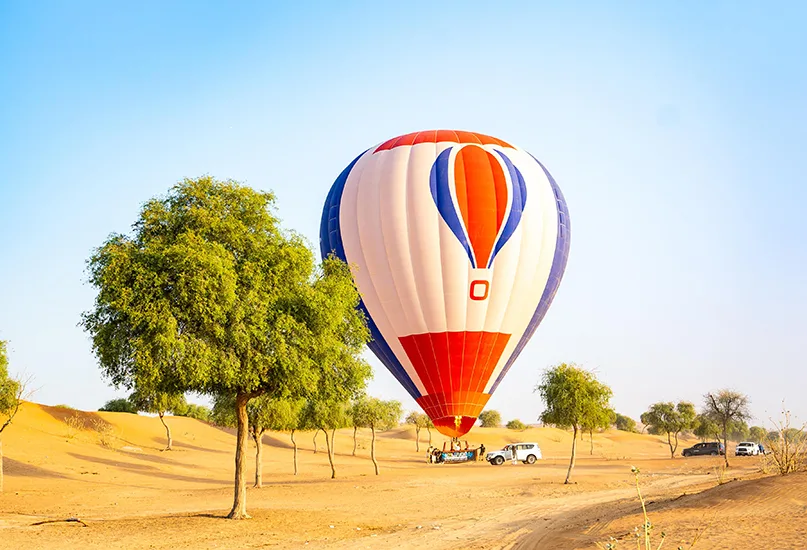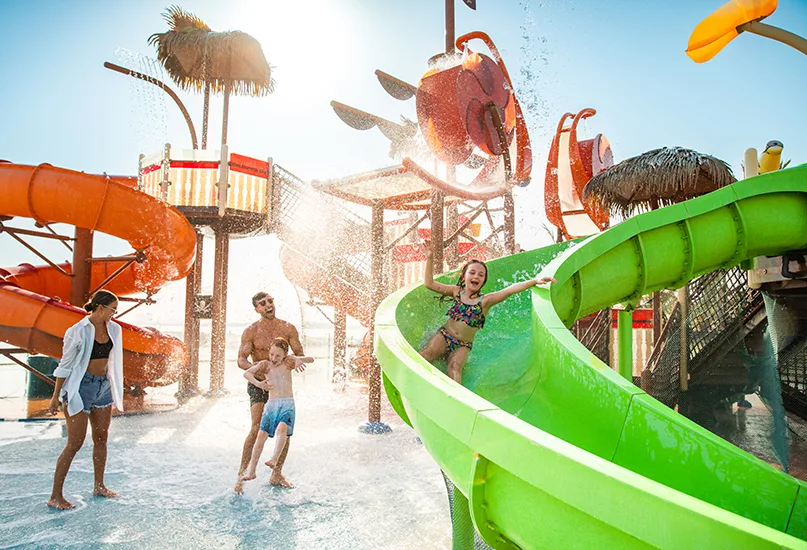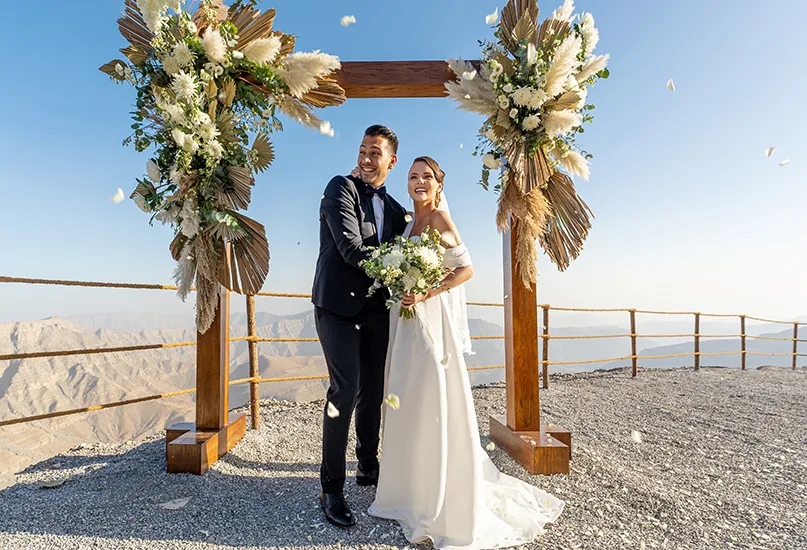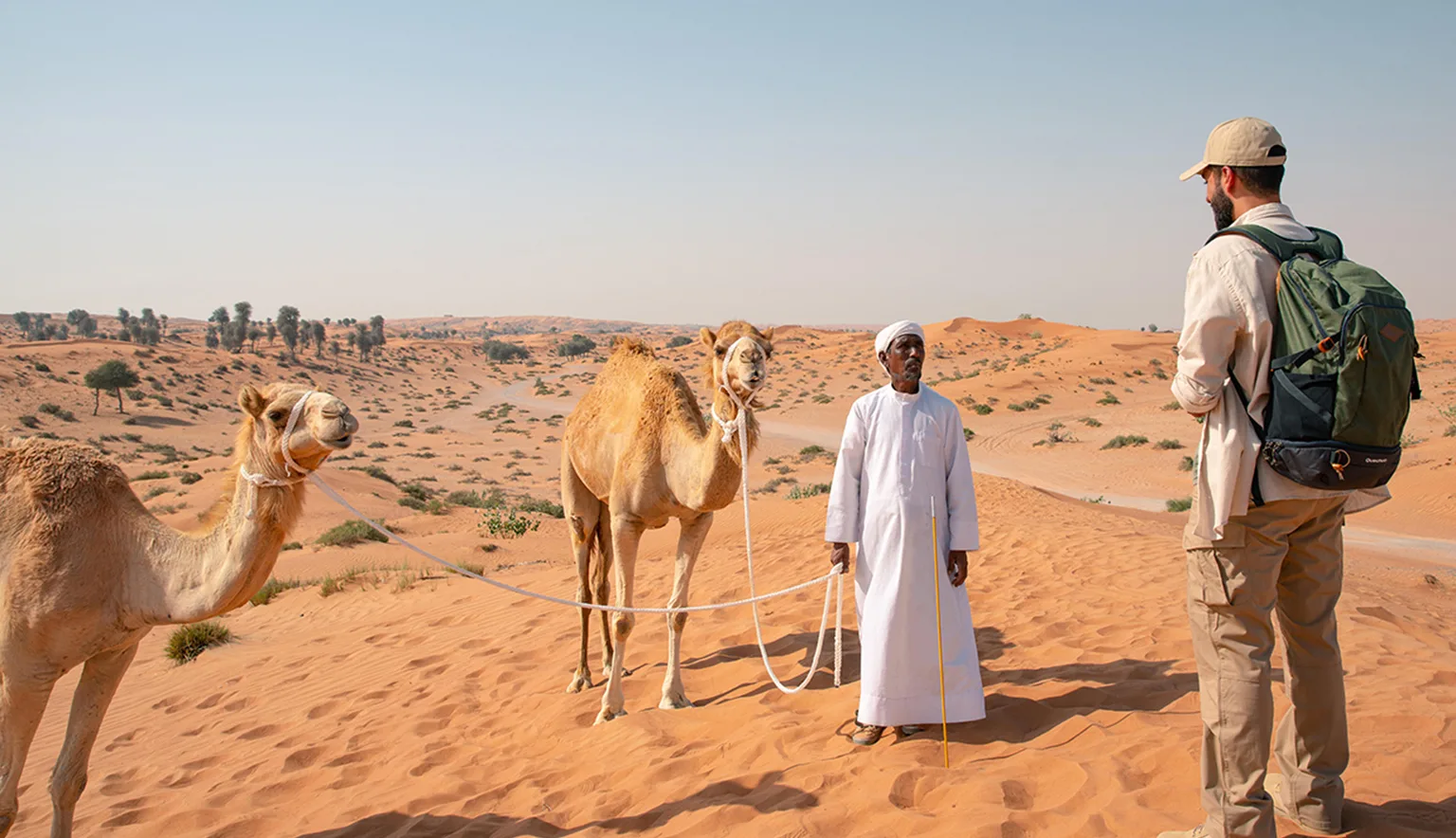Iyad Rasbey, Vice President of Destination Tourism Development at the Ras Al Khaimah Tourism Development Authority, delves into the strategic vision and initiatives that are reshaping the emirate as an emerging leader in luxury, adventure, and sustainable tourism, highlighting its ambitious goals for the future.
Q&A WITH THE RAS AL KHAIMAH TOURISM DEVELOPMENT AUTHORITY
Firstly, what are the origins of the Ras Al Khaimah Tourism Development Authority and what was its initial mission and vision?
Iyad Rasbey, Vice President of Destination Tourism Development (IR): The Ras Al Khaimah Tourism Development Authority (RAKTDA) was established in May 2011 by the Government of Ras Al Khaimah. Our mission was clear – to develop and promote Ras Al Khaimah as a top tourism destination to drive economic growth and increase the number of visitors.
Our vision was, and still is, quite ambitious – to position Ras Al Khaimah as a leading destination for luxury travel, adventure, and cultural, accessible, and sustainable tourism.
From the beginning, we understood that strategic planning, smart investment in infrastructure, and strong collaboration with local and international partners would be key to achieving those goals.
In 2024, we had a record-breaking 1.28 million visitors and observed 12 percent growth in tourism revenues. For 2030, the goal is to attract more than 3.5 million visitors and increase tourism’s contribution to Ras Al Khaimah’s GDP from five percent to one-third.
How has RAKTDA developed tourism in Ras Al Khaimah? What is the strategy for promoting it as a go-to destination?
IR: Our approach to developing tourism in Ras Al Khaimah has been multifaceted and data-driven, focused on a few key areas.
First, we wanted to highlight what makes us unique, and that’s our incredible natural diversity. We call ourselves the ‘Nature Emirate’ because we have pristine beaches, vast desert dunes, lush mangroves, and the majestic Hajar Mountains, all within a very short distance. That allows us to offer experiences that you can’t find anywhere else.
We have also enhanced our international outreach efforts and conduct extensive market engagements each year in more than 70 cities worldwide. This helps us expand our global footprint and reinforce Ras Al Khaimah’s appeal as a must-visit destination for adventure, culture, and relaxation.
Air connectivity is also crucial, so we’re strategically expanding Ras Al Khaimah International Airport and adding new direct flights from key markets. Plus, we’re only 45 minutes from Dubai International Airport, which is a considerable advantage, particularly for ensuring we are easily accessible for UK tourists.
Of course, world-class hospitality is essential. We have over 8,000 rooms, and more than half are in 5-star hotels. We offer everything from family-friendly and affordable options to ultra-luxury villas, catering to all kinds of travellers, and we have an exciting pipeline of new hospitality openings, including some premier escapes from the likes of Wynn, Four Seasons Hotels and Resorts, Nobu, W Hotels, and Fairmont.
We also emphasise adventure and sports, showcasing Jebel Jais, the highest peak in the UAE, and attractions like Jais Flight, the world’s longest zipline, and the Bear Grylls Explorer Camp. With 7,000 years of history and a real commitment to preserving our heritage, we also have a vibrant cultural scene.
So, our strategy is about positioning Ras Al Khaimah as a destination that offers something for everyone. That’s what we think makes us a ‘go-to’ destination.

What defines Ras Al Khaimah and distinguishes it from the other emirates in the UAE?
IR: What defines Ras Al Khaimah is our combination of incredible natural diversity and rich history. As the ‘Nature Emirate’, we truly have a unique landscape that sets us apart, as does our history.
We have 7,000 years of continuous human settlement, which is pretty remarkable. That deep cultural heritage is evident in our archaeological sites and traditional villages, which we’re proud of and are committed to preserving and celebrating.
We have four sites on the UNESCO World Heritage Tentative List and are working hard to conserve our cultural sites as places where visitors can connect with nature, immerse themselves in local culture, and enjoy genuine Arabian hospitality.
“Sustainability is at the heart of everything we do; we’re deeply committed to protecting our natural environment and cultural heritage for future generations”
Iyad Rasbey, Vice President of Destination Tourism Development, Ras Al Khaimah Tourism Development Authority
What cultural insights and community hospitality can travellers expect when visiting Ras Al Khaimah during the holy month of Ramadan?
IR: Visiting Ras Al Khaimah during Ramadan is a truly special experience. It’s a time of reflection, community, and generosity, and visitors will have the opportunity to witness and participate in the unique traditions of this holy month.
During the day, many restaurants and cafés may have adjusted hours, but visitors can still find places to eat and drink. As the sun sets, the atmosphere transforms as families and communities gather for Iftar, the evening meal that breaks the fast.
Many hotels and restaurants offer special Iftar experiences, providing visitors with a chance to sample traditional Emirati cuisine and learn about the significance of Ramadan.
Visitors will also notice a heightened sense of community and generosity during this holy month. Many organisations and individuals offer food and assistance to those in need, and there is a strong emphasis on charitable giving.
We encourage visitors to respect local customs and traditions during this time, such as dressing modestly and avoiding eating or drinking in public during fasting hours. However, they will be welcomed with open arms and treated with the utmost hospitality.
As a prominent meetings, incentives, conferences, and exhibitions (MICE) hub, how does RAKTDA assist businesses in hosting events? Are there any upcoming events or festivals that visitors should be aware of?
IR: Ras Al Khaimah is emerging as a leading MICE destination, and we’re absolutely committed to supporting businesses in hosting successful events here. Our 40 percent year-over-year growth in MICE visitor numbers in 2024 is a testament to that.
We offer a whole range of services and resources to assist event organisers, from helping them find the perfect venue to guiding them through the permitting process. Additionally, we provide marketing and promotion support, logistical assistance, and even MICE and wedding incentive programmes. We’ve launched an online training platform for MICE agents and wedding planners and created a MICE playbook to make things even easier.
We also hosted the 14th edition of the Exotic Wedding Planning Conference in February, the world’s largest wedding planning conference. Over 500 elite attendees were welcomed from more than 80 countries, including over 35 renowned speakers and 100 distinguished exhibitors, which we were honoured to host as a top destination for high-profile, luxury events and weddings.
We also have strategic partnerships with international professional congress organisers, incentive houses, associations, wedding planners, and corporate travel agencies.
As for upcoming events, we have a dynamic calendar. In 2025, we’re particularly excited to continue the Seven Wonders concert series, featuring seven international acts performing across seven iconic Ras Al Khaimah destinations over seven weeks; it’s going to be an incredible experience.
We have other key events throughout the year, so I’d encourage everyone to check our website and social media channels for the latest information.

What cultural experiences and natural wonders should visitors not miss?
IR: Ras Al Khaimah is packed with cultural experiences and natural wonders. Jebel Jais, our iconic mountain, is a must-see, offering breathtaking views and thrilling adventures.
Dhayah Fort, a historic fort perched on a hilltop, is another essential stop, offering stunning views and a glimpse into our past.
Swimming with camels is a unique activity where visitors can observe and interact with camels during their aquatic training sessions. Local trainers take young race camels and calm school camels to the beach in the early morning to enhance their overall strength.
This allows observers to see the camels’ physical capabilities, such as their strength, stamina, and manoeuvrability, whilst paddling and swimming alongside them.
I’d also recommend visiting Suwaidi Pearls, the only remaining pearl farm in the Gulf region, to learn about the local history of pearl diving. Al Jazeera Al Hamra is a preserved pearling and fishing village which is being restored using traditional building techniques and original materials to maintain the site’s historic integrity.
Have any sustainable tourism initiatives been implemented to protect the landscape and local heritage of Ras Al Khaimah?
IR: Absolutely! Sustainability is at the heart of everything we do; we’re deeply committed to protecting our natural environment and cultural heritage for future generations.
We’re leading in sustainable tourism, focusing on environment, social, and governance (ESG) practices aligned with the UN’s 17 Sustainable Development Goals (UN SDGs), and the first in the Middle East to earn an EarthCheck Sustainable Destinations Silver Certification.
We’ve seen some significant achievements, including reduced energy consumption, greenhouse gas emissions and waste output. Additionally, we’ve launched Responsible RAK, where hotels and tourism businesses can earn certification for their sustainable practices; and partnered with Sage Inclusion to create the most extensive accessibility assessment of its kind in the Middle East.
Our sustainability efforts extend to cultural preservation; we’re building our Cultural and Heritage Vision to preserve historical and archaeological sites. This roadmap will preserve 20 out of more than 80 of the emirate’s historical and archaeological sites that date back to the Bronze Age. We believe sustainable tourism is a responsibility and opportunity to enhance the visitor experience and create a more resilient tourism industry.
“We’re targeting over 3.5 million annual visitors by 2030, and I’m confident we can achieve that goal. I believe Ras Al Khaimah has the potential to become one of the leading tourism destinations in the region, and we’re working hard to make that happen”
Iyad Rasbey, Vice President of Destination Tourism Development, Ras Al Khaimah Tourism Development Authority
As a destination with more than 7,000 years of history, where are the best places to uncover the story of Ras Al Khaimah?
IR: To uncover the story of Ras Al Khaimah, I’d recommend discovering the four historic sites on the UNESCO World Heritage Tentative List. They include the abandoned pearling village of Al Jazeera Al Hamra, the old port city of Julfar, and Shimal and Dhayah, which have settlements dating back thousands of years.
The National Museum of Ras Al Khaimah is another must-visit. It’s located in a former fort and houses a comprehensive collection of artefacts that tell the story of the emirate from ancient times to the present day.
Suwaidi Pearls is also a must-see. Before oil, pearling was the UAE’s primary source of wealth, and the Al Suwaidi family played a key role in that history. Today, Suwaidi Pearls is the only traditional pearl farm left in the UAE, a national institution in Ras Al Khaimah that provides locally-sourced pearls to jewellers worldwide.
Visiting these sites, combined with exploring traditional souks and engaging with local communities, will give you a rich and immersive understanding of Ras Al Khaimah’s fascinating history.

What type of travellers does Ras Al Khaimah attract, and how does it cater to adventure enthusiasts and relaxation seekers alike?
IR: Ras Al Khaimah caters to a diverse range of travellers. We attract both adventure enthusiasts and relaxation seekers, as well as families, couples, and cultural explorers.
For adventure enthusiasts, we have so much to offer, from 94 kilometres of developed hiking trails to rock climbing and ziplining. Jebel Jais is a major draw for those seeking adrenaline-filled experiences.
We also have pristine beaches, luxurious resorts, and tranquil desert landscapes for those looking to relax and unwind. We cater to families with family-friendly activities and attractions, including a wide selection of all-inclusive resorts designed to offer world-class service and 5-star facilities. We also provide a wealth of cultural and historical experiences for those interested in learning more about our heritage.
Our goal is to provide diverse experiences that appeal to a wide range of travellers so everyone can find something to enjoy in Ras Al Khaimah.
Finally, are you optimistic about the future of the tourism industry in Ras Al Khaimah?
IR: I’m incredibly optimistic about the future of tourism in Ras Al Khaimah. Our record-breaking numbers in 2024, with 1.28 million visitors and strong growth in both tourism revenues and MICE visitors, show that we’re on the right track.
We have a clear vision, strong team, genuine commitment to sustainable development, and are continuously investing in new attractions, improving our infrastructure, and expanding our marketing efforts.
We’re targeting over 3.5 million annual visitors by 2030, and I’m confident we can achieve that goal. I believe Ras Al Khaimah has the potential to become one of the leading tourism destinations in the region, and we’re working hard to make that happen.
Our focus on sustainability, accessibility, authenticity, and adventure will continue to differentiate us from other destinations and attract a growing number of visitors looking for unique and meaningful travel experiences – the future is very bright for tourism in Ras Al Khaimah!
























